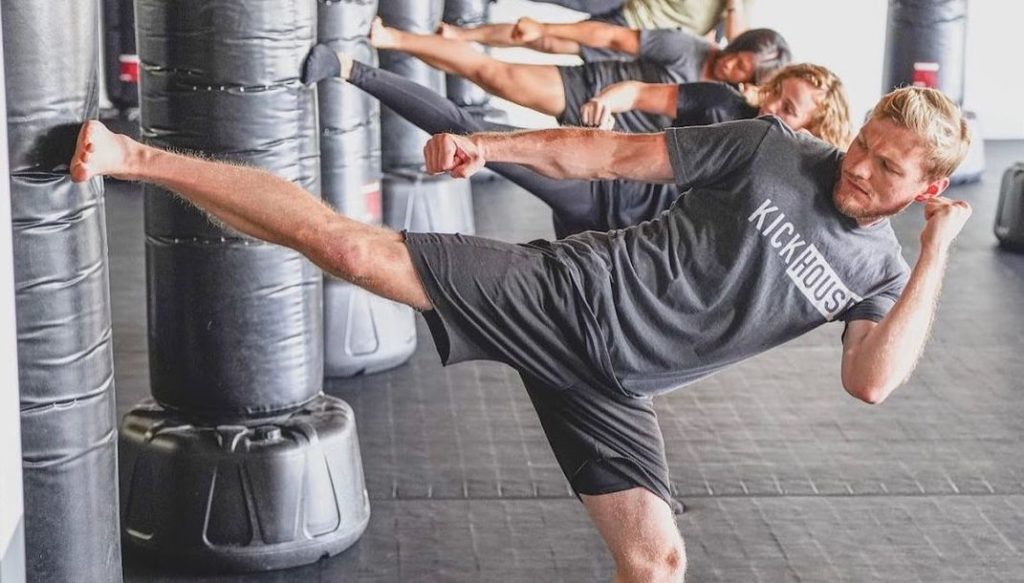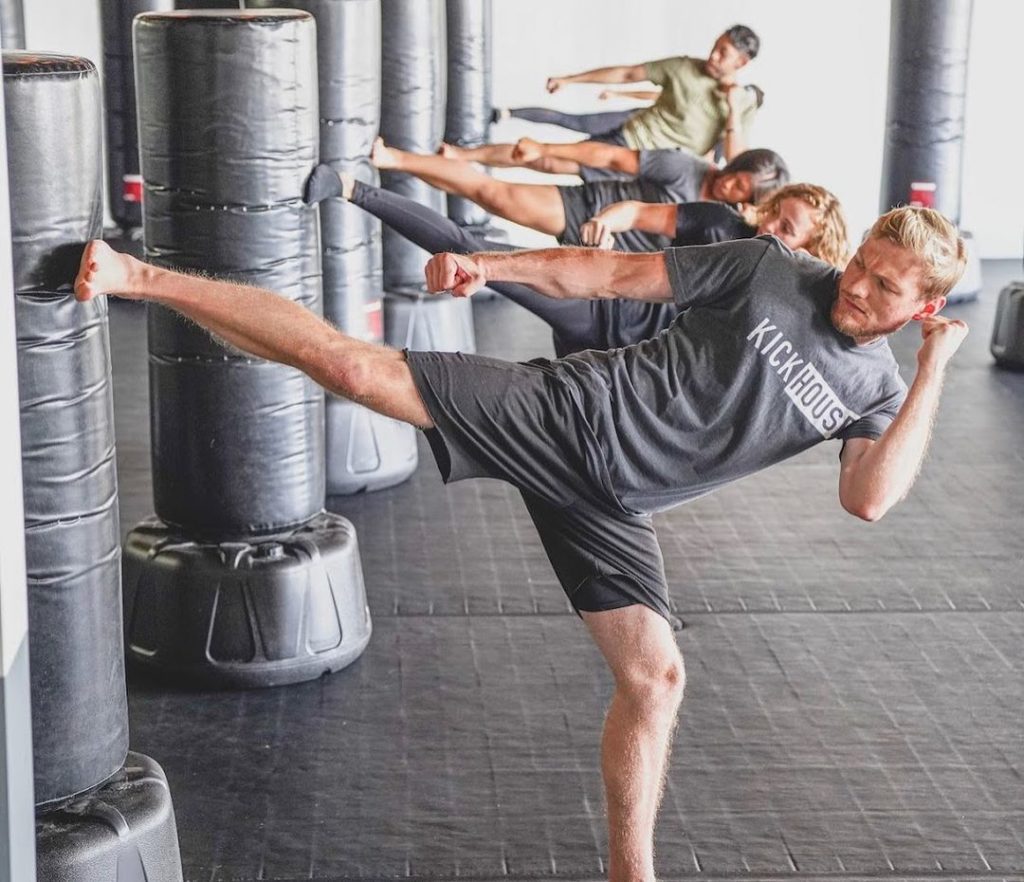5 Things You Should Know Before You Start Working Out

1. Why is exercise an important part of a healthy lifestyle? What are some of its benefits, both physical and mental?
Exercise is an important part of a healthy lifestyle for so many reasons.
- Toning Up: Whether you’re looking to lean out your arms, legs, or core, there’s a workout for everyone. A study by the Muscle, Ligaments and Tendons Journal showed that after five weeks of training, participants showed significant improvements in muscle power, speed, and agility.
- Body Fat Loss: I recommend incorporating regular moderate intensity exercise, around 45 min most days of the week to reduce body fat. A study by Duke University found that aerobic exercise, like kickboxing, HIIT classes, and group fitness classes was the most effective way to reduce belly fat, a problem area for fat accumulation that, according to Duke’s study, correlates with heart disease and diabetes
- Relieve Stress: Aerobic exercise provides sustained cardiovascular activity which not only relieves stress, studies have also shown that exercises can also diminish feelings of anxiety, depression, and anger and help reduce stress related inflammation in the body.
- Improves Cardiovascular Endurance : Cardio-heavy workouts are the key to endurance. A study published by the journal Biology of Sport shows that regular cardio-centric exercise can build cardiovascular and muscular endurance.
2. How often should someone work out? More specifically, should they work out every day of the week? Why or why not?
You should be working out 5-6 days of the week between 45min -60 min each day at varying intensities. It is safe to workout every day of the week as long as structured active recovery days are part of the workouts that are being done.
I recommend training in all of your HR zones throughout the week. This will ensure you are training your body to be an efficient fat burner while improving your aerobic endurance and increasing your strength and stamina. KickHouse recommends the 80/20 rule:
Only 20%, or no more than 2 workouts a week, should be done at high intensity or in your anaerobic zones (this is the intensity that your body burns primarily sugar or carbohydrates, and is where you’re working at your absolute hardest effort).
About 80% of your workouts should be a mix of low to moderate efforts to promote a healthy metabolism and improve your body’s ability to utilize fat as its primary fuel source (oxygen must be present to burn fat, which means you are not overtaxing your body here).
For optimal health, of the 5 or 6 workouts you are doing each week 2 will be at your highest intensity and the other 3-4 will be low to moderate intensity.
I highly encourage everyone to take one Recovery Day. Recovery day activities include light activities like RecoveryKick, biking, walking, hiking, swimming, and yoga. Your body improves at rest, so this is an important part of your overall fitness regimen.
3. What are rest days and why are they important? How many rest days should someone have each week? Would you suggest a rest day follow after a particular type of workout, like strength or HIIT training? Why or why not?
Rest days are just as important as your workouts when you are exercising at a moderate to high intensity on most days of the week. Rest days are not days where you do nothing. A rest day would include recovery work, low intensity steady state training and mobility work somewhere between 45-60 min. Some of the most common recovery or rest day activities are walking, light hiking, swimming, restorative yoga, and possibly a bike ride through the neighborhood.
If someone is training 4-6 days a week, I would recommend 1-2 recovery days spending on the intensity of the workout the day before. If you train a HIIT or high intensity session the day prior, it’s best to take a recovery or rest day session. Incorporating recovery/rest days improves your performance in physical activities by allowing your body to repair the damage to the muscle fibers and connective tissue that is done in your workouts and helps to decrease your risk of injuries.
4. Is variety important in a weekly workout routine? Why? What are the benefits of incorporating both strength training and cardio workouts into a weekly routine?
Variety in your workouts is the key to optimal fitness. Incorporating both cardio and strength training workouts throughout the week helps you to build lean muscle mass, decreases body fat, promotes a healthy and efficient metabolism, improves your body’s ability to utilize all fuel systems, and decreases the risk of injury and burnout. When you train your body with a variety of modalities and intensities, you will improve your “Fat Burning Engine”, which allows your body to become metabolically flexible and efficient. The goal is to tap into the right fuel system in your workouts to get the results you want.
5. Ultimately when it comes to exercise, which is more important, finding something you enjoy that you can stick with? Or making sure you keep incorporating strength training or cardio even if you dislike that particular type of workout?
When it comes to exercise, there are so many options available that there is absolutely something for everyone. Doing some online research to find the right workouts to try is a great place to start. Sometimes it’s even more about the community and people you meet in the studios. Finding the right workouts, the right community, and then consistency in your schedule to make your training a priority will improve your health both physically and emotionally. Keep trying new places, new workouts and activities that get you moving, and help you reconnect with yourself.
***
- Melamed S et. al.Burnout and risk of cardiovascular disease: evidence, possible causal paths, and promising research directions. Psychol Bull. (2006) 132(3):327-53.
- Heim C et. al.The potential role of hypocortisolism in the pathophysiology of stress-related bodily disorders. Psychoneuroendocrinology. (2000) 25(1):1-35.
- Smith LL. Cytokine hypothesis of overtraining: a physiological adaptation to excessive stress? Med Sci Sports Exerc. (2000) 32(2):317-31.
- Angeli A. et al. The overtraining syndrome in athletes: a stress-related disorder. J Endocrinol Invest. (2004) 27(6):603-12.
- KA Brooks and JG Carter. Overtraining, Exercise, and Adrenal Insufficiency J Nov Physiother. (2013) 3(125): 11717.
About KickHouse:
KickHouse is a modern kickboxing studio offering a variety of class formats, each rooted in kickboxing but with additional fitness flare added in. The KickHouse mission is to help members and communities take their health and kick it up a level via a consistent kickboxing practice! KickHouse is the perfect kickboxing gym for beginners or advanced athletes. The new kickboxing brand has quickly grown to over 35 locations across the country. To find your nearest KickHouse location visit www.kickhouse.com/locations. To sign up for your first class offer please visit www.kickhouse.com/first-class-free to book your first sweat session with our fight fam.
